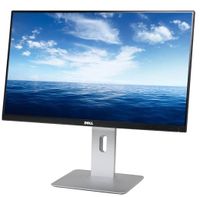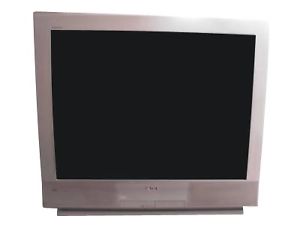We are still actively working on the spam issue.
Monitors
There are many types of monitors to choose from. If you are in the market for a new monitor, you may be confused as to where to start and what to look for. If so, you have come to the right place.
Contents
[hide]Picking a monitor
Monitors come in a wide variety of flavors. Some monitors are designed specifically for gaming, while others may be designed strictly for photo editing. The trick to picking the best monitor is to pick the one that best caters to your needs. Below is a guide which will help you find what you are looking for.
General use, light-medium gaming
An IPS paneled monitor is preferred for general use and/or light to medium gaming. Response times between 8ms and 5ms can handle all but the fastest games perfectly fine. Resolution is subjective, however keep in mind that the higher resolution you pick, the more powerful your graphics card will need to be to play games at a steady frame-rate. As of 2022, all mid-range graphics cards ($300 price range) can handle almost all games on maximum settings at 1080p.
- Panel: IPS
- Refresh Rate: 60hz
- Response time: 8ms-5ms
- Resolution: 1080p-4k
- Brands: Dell Ultrasharp, ASUS, Acer
Heavy gaming
For those who play games competitively, a monitor with a TN panel and a 144hz refresh rate is suggested. This is because TN monitors have lightning-fast response times, down to 1ms. Also, TN panels are the only ones currently that can run at a 144Hz refresh rate, which is smoother than 60Hz. Downsides to this type of panel include bad viewing angles and mediocre color reproduction in comparison to IPS panels.
- Panel: TN
- Refresh Rate: 144Hz
- Response time: 3ms-1ms
- Resolution: 1080p
- Brands: Asus, BenQ
Photo/Video editing
A recommended resolution for photo and video editing is 2k or higher, as technology is rapidly changing and standards in these markets are becoming higher. Response time is less important for these types of monitors, assuming that you will not be gaming at all. What's most important is resolution and color accuracy. Expect to pay a hefty price for a good 2k-4k monitor (above $250). If you intend to edit photos and videos, naturally you will want a wide display to see everything more easily. 24” is a safe size to start from.
- Panel: IPS
- Refresh Rate: 60Hz
- Response time: 10ms-5ms
- Resolution: 2k-4k
- Brands: Dell, Asus, Acer
CRTs
For retro gaming many people prefer CRTs as they scale well across many resolutions, going as low as 240p most of the time. Pros:
- Don't have a fixed number of "dots" for pixels so to speak; they can do a wide range of resolutions without losing any clarity.
- Display lag of effectively 0ms (it was measured to be around 2ms at the most)
- Great quality colors and true blacks that don't look grey-ish like in modern displays.
- Extremelly cheap. Can often be taken for free.
Some brands known for their quality are Sony, NEC, iilyama. Note: CRT computer monitors can't normally do 240p 60Hz but the trick to getting 240p is setting the resolution to 120 Hz (or the double of the game's FPS) and you can enjoy the THICC CRT true scanlines.
To calculate the maximum refresh rate of a CRT at a certain resolution you must do Vrefresh = Hrefresh / horizontal lines x 0.95 So if your screen has a maximum horizontal refresh of 96 kHz and you are running 800x600, the equation would be: Vrefresh = 96.000 / 600 x 0.95 = 152 Hz. So 152 would be the maximum refresh rate for that screen at 800x600 unless the max. vertical refresh is lower than that value. Check the manual.
Other general tips
- Pick a monitor that has the necessary ports required to run your machine. You don't want to buy a monitor that only takes Display Ports if your computer has no Display Ports.
- Don't be afraid to spend a good amount on a monitor. After all, this is the thing you will be staring at for possibly hours at a time.
- The size of your monitor is entirely subjective, pick a size that is best for your environment. This is unless you are editing photos or videos, where more real estate will be handy to see what you are doing.
- Take into account the size of the bezels when picking a monitor. Bezels are the plastic sides of the monitor where the screen touches. If you intend to run a dual monitor set-up, try to pick monitors with the thinnest bezels.
- Display lag isn't measured very well by the manufacturers and they will often show cherry-picked values for marketing purposes that aren't really useful for comparison. Every modern display has a display lag of at least 9ms despite what the big companies say.
External links
Logical Increments provides a list of recommended monitors.
DisplayLag.com provides true values for HDTV and monitor display lag.

